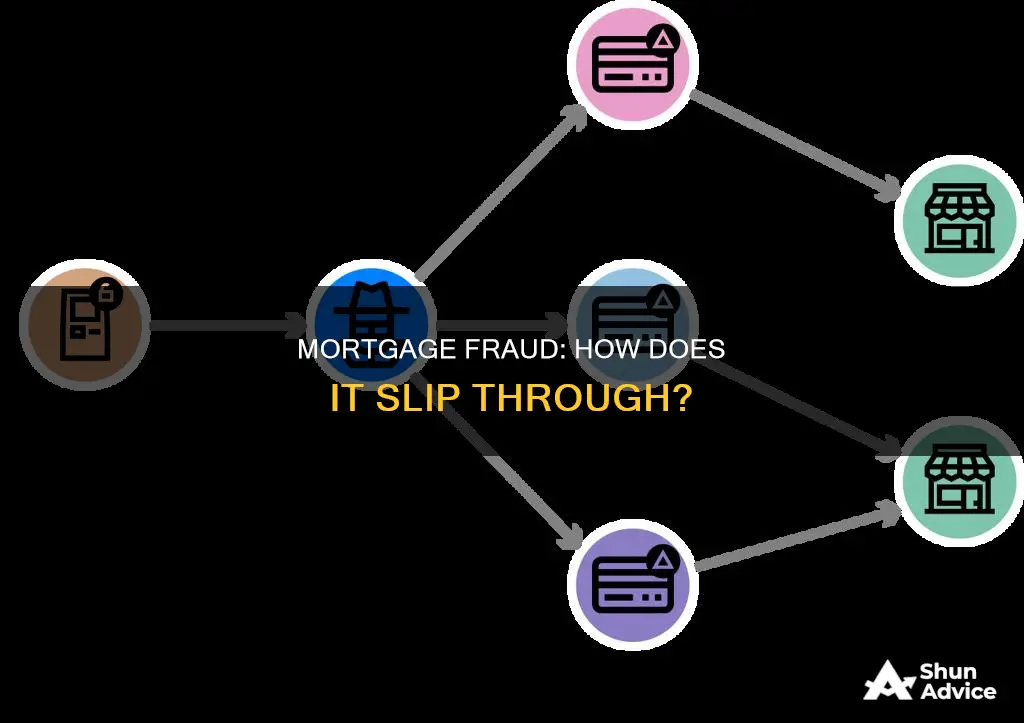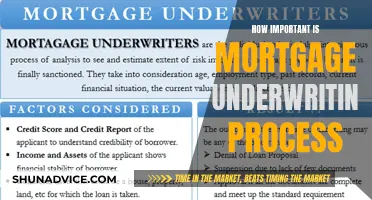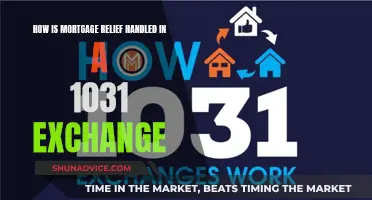
Mortgage fraud is a serious financial crime that involves deliberately deceiving a mortgage underwriter, lender, or borrower in the process of funding, purchasing, or insuring a mortgage loan. It is typically carried out by industry insiders, such as bank officers, appraisers, mortgage brokers, attorneys, and other professionals, who use their specialized knowledge to facilitate the fraud. The intention is often to receive a larger loan amount than would have been possible with an honest application, by falsifying information on mortgage documents. This can include incorrect details on loan applications, artificially high property appraisals, identity theft, and scams that aim to steal equity from homeowners. Mortgage fraud can have severe consequences, including fines of up to $1 million and up to 30 years in federal prison under US federal and state laws.
| Characteristics | Values |
|---|---|
| Definition | Mortgage fraud involves deliberately lying about or omitting information that can be used by a mortgage underwriter or lender. |
| Committers | Mortgage fraud can be committed by both borrowers and lenders. |
| Objective | The intention of mortgage fraud is typically to receive a larger loan amount than would have been permitted if the application had been honest. |
| Types | Fraud for profit, fraud for property, straw purchases, house flipping schemes, equity skims, inflated appraisals, foreclosure relief scams, loan modification scams, and predatory lending. |
| Punishment | Mortgage fraud is a serious offense and can lead to prosecution, jail time, fines, restitution, and prison time with sentences of 28 months on average. |
What You'll Learn

Insider fraud
Insiders use their industry knowledge to facilitate fraud by misusing the mortgage lending process to steal cash and equity from lenders or homeowners. For example, a corrupt appraiser may inflate the value of a property, leading to a higher home price and more cash for the seller. This type of fraud can also involve straw buyers, who purchase property on behalf of another person using false income documents and credit reports. After closing, the straw buyer passes the property to the investor, who then rents out the property without making any mortgage payments.
In some cases, insiders may submit falsified loan documents or entice an appraiser to manipulate a property's appraised value. They may also provide false or deceptive information to a lender in order to obtain a mortgage, such as misrepresenting income and asset information on a loan application.
Factors That Determine Mortgage Eligibility in the UK
You may want to see also

Fraud for profit
One common scheme is loan origination fraud, where false information is provided during the application process to secure a mortgage. This can involve inflated borrower incomes, falsified employment details, forged credit histories, or false documentation of the value of pooled mortgages. In some cases, mortgage brokers or loan officers may collude with borrowers to ensure loans are approved even when borrowers do not qualify.
Another scheme is property flipping, where properties are rapidly purchased below market value, fraudulently appraised, and then resold at inflated prices. This type of fraud can artificially inflate market values and defraud mortgage lenders and investors, leading to significant financial losses and destabilization of the housing market.
Equity skimming is another form of fraud for profit. It involves acquiring property, often through deceptive means, and stripping it of its equity without making mortgage payments. Straw buyer scams are also common in fraud for profit. This involves the use of a "straw buyer," who may be an unsuspecting victim of identity theft or a complicit participant, to purchase property on behalf of another person.
To prevent falling victim to or inadvertently committing fraud for profit, individuals should be transparent when reporting their financial information and only work with reputable professionals.
Understanding Your Monthly Mortgage Payment Calculation
You may want to see also

Fraud for housing
Mortgage fraud is a serious criminal offence that can carry severe legal consequences, including prison sentences of up to 30 years and fines of up to $1 million under US federal law. Fraud for housing is one of the two primary forms of mortgage fraud, the other being fraud for profit. Fraud for housing is committed by borrowers who are motivated to acquire or maintain ownership of a home. This often involves misrepresenting or omitting relevant details about employment, income, debt, credit, property value, and condition.
Borrowers may commit fraud for housing with the assistance of loan officers or other personnel. They may provide false information about their income, identity, or employment status to appear more financially qualified for a loan. This can be done by borrowing or renting assets from others, known as asset rental fraud. Straw buyers are sometimes used in this process, where an individual purchases property on behalf of another person using false income documents and credit reports. Straw buyers may be complicit and earn a commission, or they may be unsuspecting victims of identity theft.
Home appraisal fraud is another form of fraud for housing, where a property's value is inflated beyond its actual value, leading to a higher selling price. This is common in property flipping schemes, where a property is purchased below market value and immediately resold at a profit. Foreclosure relief scams also target homeowners at risk of defaulting on their loans, misleading them into believing they can save their homes by putting the property in the name of a third-party investor. These scammers then sell the property using a fraudulent appraisal and steal the proceeds, often resulting in the original homeowner losing their home.
HELOC vs Mortgage: Understanding the Key Differences
You may want to see also

Foreclosure relief scams
Scammers obtain lists of people in mortgage debt or whose homes are in foreclosure from county clerks' offices, which publish records of foreclosure, including addresses, on a weekly basis in local newspapers. Scammers will then contact these people by mail, telephone, or even by knocking on their doors, offering financial solutions to their foreclosure or debt problems. Sometimes, scammers will target entire neighbourhoods or cities by posting advertisements and flyers marketing their services.
Scammers may try to convince victims to sign a contract with a buyback agreement that includes terms that are impossible to meet, such as extremely short periods for buying back the home or enormous fees. They may also charge extremely high interest rates and fees on loans that are supposed to be "low-cost", and then take the deed to the home when the victim defaults on the loan. They may also buy the home from the victim and then charge huge hidden fees that eat up much or all of the proceeds of the sale.
Scammers may also charge huge fees for "negotiating work" with the lender that is never done, lie about the length of time before the house is put up for foreclosure auction, pressure victims into signing documents without reading them, and refuse to allow victims to speak to their lender or lawyer.
To avoid falling victim to foreclosure relief scams, homeowners should be aware of their rights under the law and the signs that someone is attempting to take advantage of them. They should also be aware that only their mortgage servicer has the discretion to grant a loan modification, so no third party can guarantee or pre-approve a mortgage modification application. Homeowners should also beware of anyone seeking to charge them in advance for mortgage modification services.
Retirement Savings: Mortgage Application Considerations for Your 401k
You may want to see also

Identity theft
In some cases, scammers use a false or stolen identity to commit mortgage fraud. For example, in a foreclosure relief scam, homeowners at risk of defaulting on their loans or facing foreclosure are misled into believing they can save their homes by putting the property in the name of a third-party investor. The perpetrators then sell the property using a fraudulent appraisal, stealing the seller's proceeds. The homeowners are led to believe they can rent the property and repurchase the home later, but the scammers never make the mortgage payments, and the property goes into foreclosure.
Mortgage fraud can also occur when individuals borrow or rent the assets of others to make themselves appear more qualified for mortgage financing. This is known as asset rental fraud. After the mortgage closes, the money is typically paid back to the individual the funds were borrowed from.
To prevent falling victim to identity theft in mortgage fraud, individuals should:
- Regularly review their credit reports for any unauthorized inquiries or accounts, suspicious activities, or errors.
- Work with trusted, accredited, and registered lenders.
- Avoid paying upfront fees for loan modification help, as legitimate programs do not require advance payment.
- Get everything in writing and review documents before signing.
- Seek approved counseling for information about mortgage loan payment options.
HELOC vs Mortgage: Interest Calculation Differences Explained
You may want to see also
Frequently asked questions
Mortgage fraud is a deliberate act to deceive a mortgage underwriter, lender, or borrower in the process of buying, funding, or insuring a mortgage loan. It involves lying about or omitting information that can be used by a mortgage underwriter or lender. Mortgage fraud can be committed by both borrowers and lenders.
Some examples of mortgage fraud include straw buying, air loans, double sales, home appraisal fraud, and builder bailouts. In a straw buying scheme, a fake buyer may be an unsuspecting victim of identity theft, or they may be in on the scheme and earn a commission. Home appraisal fraud occurs when a home is fraudulently inflated beyond its actual value, usually leading to a higher selling price and more cash for the seller. A builder bailout is when a seller pays large financial incentives to the buyer and facilitates an inflated loan amount by increasing the sales price, concealing the incentive, and using a fraudulently inflated appraisal.
Mortgage fraud is a serious offense and can lead to prosecution and jail time. Under U.S. federal and state laws, mortgage fraud can result in up to 30 years in federal prison and up to $1 million in fines. Other consequences may include fines, restitution, and prison time, with an average sentence of 28 months.







